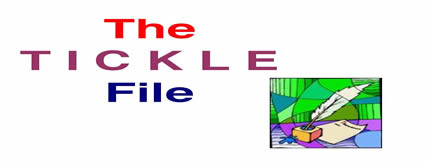
|
The Tickle File is ftm's daily column of media news, complimenting the feature articles on major media issues. Tickle File items point out media happenings, from the oh-so serious to the not-so serious, that should not escape notice...in a shorter, more informal format.
We are able to offer this new service thanks to the great response to our Media Sleuth project in which you, our readers, are contributing media information happening in your countries that have escaped the notice of the international media, or you are providing us information on covered events that others simply didn't know about. We invite more of you to become Media Sleuths. For more information click here. |
Hot topics click link for more
The most important attribute for news media’s brand strength is trust. Timeliness is also significant. Readers and audiences do, indeed, seek out points of view that mirror their own leading to a new conventional wisdom that media brand strength can be swayed by strong opinions rather than facts.
Traditional news media would, then, be in a world of hurt when faced with provocative digital-native competitors and the instantaneous realm of social media links algorithmically tailored to individual biases. Maybe not, suggests a report - Trust in Media 2017 - released this week by the European Broadcasting Union (EBU), the trade body for European public broadcasters. Using data gleaned from the Eurobarometer 86 study (November 2016) of attitudes within the European Union (EU) and candidate countries the EBU report shows good news, generally, for traditional broadcast news media. (See EBU presser here)
Radio continues to be the most trusted media within EU Member States, 59% granting trust. Television is second, at 50%. A mere 36% trust the internet, less for social media at 21%. “In this post-truth world, it is encouraging to see the public can differentiate between competing sources of news and have chosen to put their trust in more traditional media,” said EBU chief researcher Roberto Suarez in the official statement. Radio is most trusted in 21 of the 33 countries surveyed, TV most trusted in 11.
Geography displays quite obvious differences. In Scandinavian countries (Norway not included in the survey) traditional broadcast media is most trusted. Leading is Finland with 82% trusting radio and 78% TV. Newspapers are generally trusted in Scandinavia, the internet not so much. Danes trust in the internet has dropped to 38% from 54% in five years. Again, trust in social media has plummeted. Scandinavian countries, coincidentally, have long ranked highest in press/media freedom indexes. Greeks have the most trust in the internet.
TV is least trusted in Poland, Spain and Cyprus. The printed news media gets a black-eye in most of Eastern Europe… plus the UK. Social media is least trusted most everywhere else.
Strategies for digital publishers are hardening while business models are softening, somewhat. They have their plan and they’re sticking with it. A fact sheet from the Reuters Institute for the Study of Journalism, published last week (May 17), shows European newspaper publishers less likely to offer free access than the “freemium” model - some content free access, other walled-off for “premium” subscribers. On the other hand, the hard paywall is nearly dead. There are variances within the six countries measured, all based on local competition and economics.
“It is clear that growth in the number of people paying for news is in most cases incremental and that reader revenues, though growing, are rarely making up for declining legacy revenues and a difficult digital advertising market,” said the summary. “But a growing number of news organisations across Europe have challenged the assumption that people will not pay for digital news and are developing pay models.” Very few publishers use a “hard paywall” and almost no digital-native news portals charge for access. (See more about online news here)
On the other side of the equation, a study of global internet users from GlobalWebIndex (Q4 2016) showed 12% paying for online news content, higher in the Asia Pacific region (17%) and lower in Europe (6%) and North America (7%). Most likely to pay are 25 to 34 year olds, least likely 55 to 64 year olds.
|


